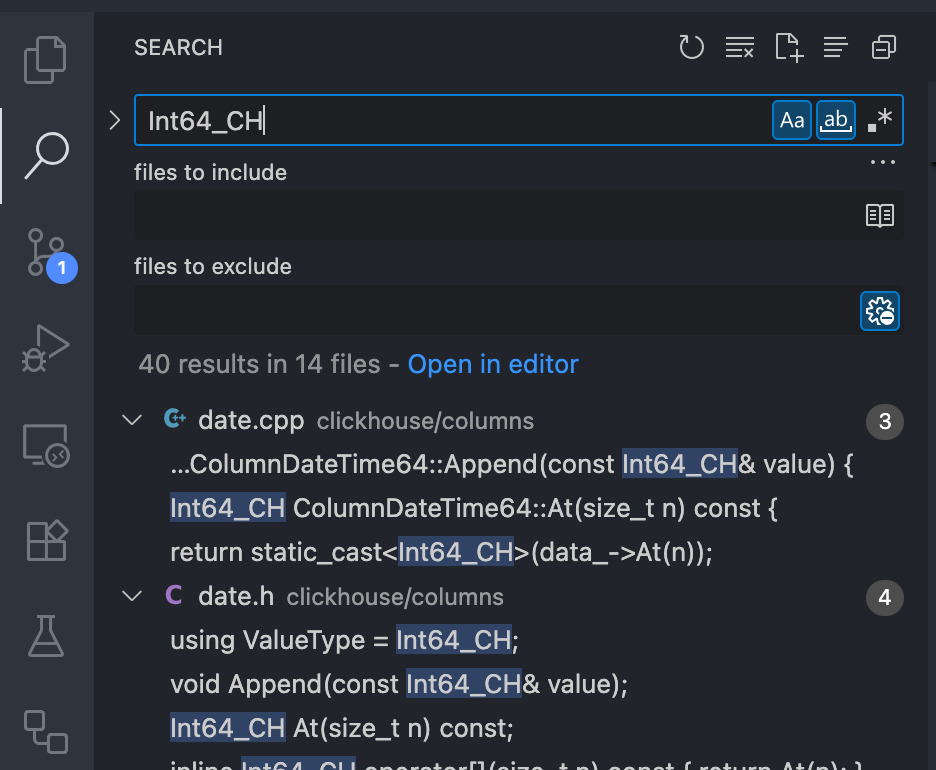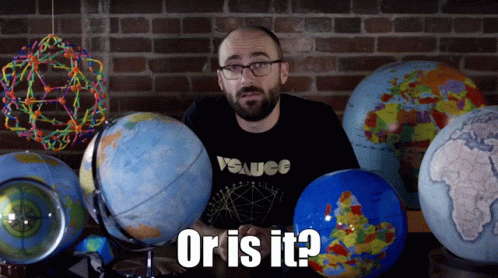Template is the Culprit - A Lesson from C++ 🔧
DON'T use templates when writing library code where you want to hide the dependency on a third party library, so that downstream projects don't have to link against it. Use interface and inheritance instead.
1 The Why ❓
I was tasked to use clickhouse-cpp, a third party library to interface with ClickHouse database from my C++ codebase (my project for convenience), and I was excited to implement it. Little did I know, this was the beginning of a month-long struggle to get it working. At least in the journey, I refreshed my knowledge of C++, compiling/linking, template metapprogramming, and multi-threading.
2 The Start 📍
The first step was to build the library from source, which was seemingly straightforward. In itself, the library was a CMake project, and I was able to build it. But when I try to use it in the context of my project, all sorts of problems started appearing out of nowhere. So grab your ⛑️, relax, and see how I stubbed my toes, repeatedly!
2.1 Symbol Conflict Resolution
My project uses custom build scripts, and has a rigorous process for third party inclusions, i.e. scanning, integration with CI, etc. So when I tried to directly use the build artifact from the original CMakeLists.txt, the first hurdle there was symbol conflicts with my Macros flying around, specifically Int64, Int32, UInt64, UInt32. These were problematic since it was unrealistic to change my codebase, so I had to do refactoring in the clickhouse-cpp source code. What I ended up doing was changed all occurrences of these symbols. For example, Int64 alone had 40 places to change!

2.2 Third Party for clickhouse-cpp
The clickhouse-cpp library itself has stripped down versions of third party libraries under the contrib directory, such as
- abseil
- cityhash
- lz4
- zstd
So when my project tried to compile, the header files from these libraries were missing, because the default build artifact didn't emit those. So for each of the CMakeLists.txt under each third party library, I appended this instruction to install them.
INSTALL (DIRECTORY ${CMAKE_CURRENT_SOURCE_DIR}
DESTINATION include
FILES_MATCHING
PATTERN "*.h"
PATTERN "*.inc"
)
2.2.1 OpenSSL
One particularly messy third party library is OpenSSL. Because my project builds OpenSSL in-house, I actually wanted the clickhouse-cpp to link against our own OpenSSL binaries rather than its bundled version. In my custom build scripts, I added several build options.
cmake ${SRC} \
-DOPENSSL_INCLUDE_DIR=${OPENSSL_INCLUDE_DIR} \
-DOPENSSL_CRYPTO_LIBRARY=libcrypto.so \
-DOPENSSL_SSL_LIBRARY=libssl.so \
-DWITH_OPENSSL=ON \
-DBUILD_SHARED_LIBS=ON
After this, the build artifact is a shared library with its third party libraries statically linked into them, and all the header files installed to desired directory.
2.3 Multi-platform Build and CI
Successfully built for local development, I have to automate all those step by writing a script for CI to use. As for Windows, I let professionals do their professional jobs in this case 😊, shout out to my CI teammates.
2.3.1 Linux
Linux uses .so files for shared library and dynamic linking, and symbols are exported by default.
2.3.2 Windows
Windows uses .dll files for shared libraries and .lib files as import libraries, and symbols are not exported by default. And for debug build, .pdb files are also emitted for Visual Studio debugger to map compiled code back to the original source code. So what the CI team ended up doing was to let cmake emit those extra third parties as static libraries also in .libs, and then from my project, I
- statically link against these extra third parties directly,
- dynamically link against the clickhouse-cpp library.
3 The Coding 👨💻
After all those hassles, I was finally writing code. In short, there were two versions of the implementation in the process, and we are finally getting to the template part.
3.1 First Implementation
In the first try, I wrote code for a very specific use case, targeting only one downstream sub-project within my project (fairly low in the dependency tree). I did some simple ad-hoc optimizations such as
- overlapping data preparation with data transmission, using
std::future - tabular data duplicate column buffering
- block size estimation and pre-allocation
The results were generally acceptable, and my code got merged into the main branch ✌️.
3.2 Second Implementation
But that was when things took a sharp turn. I had another request that a new feature would also use the ClickHouse functionality, which called for a rewrite.
Since that feature belonged to another sub-project, I wanted to abstract away the complexity of linking with clickhouse-cpp, by moving the implementation to a top-level sub-project, so that downstream code could use it without needing to link the dependency themselves, to minimize build time and avoid linking (on that damn Windows).
This seemed like a great design, let's do it!

3.2.1 Type Mapping
The first hurdle was type mapping. Since the first implementation had a very consistent data type mapping relations, and only in one dimension, mapping can be done quite easily. But the new feature required an array of float32s, which was a nightmare to my previous design.
To address that, I have two separate classes to manage mapped column types
OneDimDataType, original, mapped by one dimensional data typesPlainDataType, mapped by plain names
These two classes come in handy when I want to know which column type a ClickHouse column is, so that I could do proper data manipulation.
3.2.2 Reading 🌟
Since my first implementation didn't involve reading values, I didn't do anything for that matter. Now, there was a need to read data into C++. That was when my puny brain started doing the unimaginables - templates! I first thought by implementing a read template method and use concrete types like
template<typename T>
class ClickHouseColumn
{
// ColumnRef is from the clickhouse-cpp API
void ReadIntoVector(const ColumnRef&, std::vector<T>&);
};
template<typename T>
void ClickHouseColumn<T>::ReadIntoVector(const ColumnRef& col, std::vector<T>& value)
{
// impl ...
}
would suffice, and
wow templates are so cool, lol 😂
so I immediately started refactoring my class interface.
And this top-level sub-project compiled just fine. But when I tried to link against this top-level sub-project in downstream sub-projects that needed this read function, I got errors that I had unresolved symbols. That weekend, I was scratching my head going through StackOverflow, ChatGPT, Reddit and more to furiously figure out what was wrong, only to later realize the
is template instantiation at compile time!
It happened because
- When my top-level sub-project compiled, the implementation had been moved to
.hheader files, for templates to work. - When my downstream sub-project needed to use the interface, it tried to specialize it.
- The downstream sub-project saw the implementation of calling to ClickHouse specific functions.
- most notably the destructor
- any other calls to the clickhouse-cpp library
- The downstream sub-project now had to link against clickhouse-cpp, which went contrary to where we started.
As a result, even though the downstream code didn't directly include the clickhouse-cpp library, the template class would force the compiler to instantiate the full implementation every time a translation unit included the template.
3.2.2.1 The Fix ✅
To decouple the interface from the third party dependency, I replaced templates with abstract base classes and virtual destructors. Each concrete implementation now lives in the top-level sub-project, hiding ClickHouse details from downstream consumers. And I sprinkled some
dynamic_pointer_cast- or
static_pointer_castif I was feeling lucky
to get the correct type at runtime, in each downstream sub-project that needed to use the interface.
Templates can inadvertently propagate third-party dependencies through header files. Use runtime polymorphism when isolation matters.
3.2.3 Multi-threading
To speed up reading/writing, I use multiple threads to simultaneously operate on the same database. This lead to thread safety issues, which I was not aware of, half due to my carelessness. I instantiated one Client for each thread.
4 Misc 🐛
Now what if I want to track clickhouse-cpp updates? I follow below workflow to minimize the manual work I have do each time I want to upgrade the third party version.
Specifically, I use git subtree to manage updates. Suppose the source code lives under source directory, I prepared the repo like so.
# commit 1
rm -rf source/*
# commit 2
git subtree pull --prefix=source git@github.com:ClickHouse/clickhouse-cpp.git master --squash
# commit 3
# the renaming commit
# commit 4
rm -rf source/.*
# commit 5
git cherry-pick <commit hash for the renaming>
The rationale behind the renaming commit 3 is introduced at part 2.1.
These steps ensure a traceable commit history. Using subtree I can manage upgrades while preserving the commits I made to the directory, so future upgrades are as simple as
git subtree pull \
--prefix=source \
git@github.com:ClickHouse/clickhouse-cpp.git [target branch] \
--squash
plus some manual work if newly introduced code has used conflicting symbols.
